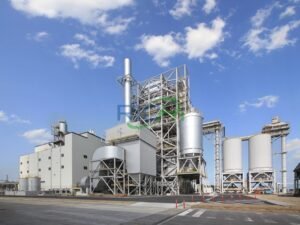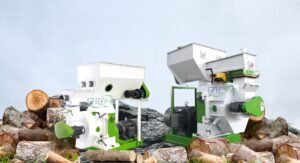
Alfalfa pellet making machines have become essential in modern agricultural systems due to their role in improving feed efficiency, reducing waste, and enabling on-site feed production. However, selecting the right machine is not always straightforward. There are various types, sizes, configurations, and technologies available on the market. The choice depends heavily on your operation’s scale, production goals, power availability, and budget.
This article provides an in-depth guide on how to choose the right alfalfa pellet making machine, breaking down critical decision-making factors and offering expert insights to help you make the most suitable investment.

1. Understanding Your Production Requirements
Before comparing machines, it’s essential to determine your exact production needs.
Key Questions to Ask:
- How much alfalfa do you process daily?
- What is your desired pellet output (kg/hour or tons/day)?
- Will the machine run continuously or intermittently?
- Are you using the pellets for your livestock or selling them commercially?
Example:
- A small goat farm may require a 500 kg/h flat die machine.
- A commercial pellet production facility may need a 3–5 t/h ring die machine.
2. Types of Alfalfa Pellet Making Machines
There are primarily two types of machines:
a. Flat Die Pellet Machines
- Best for: Small-scale farms and home use
- Capacity: 50 kg/h to 1,000 kg/h
- Advantages: Simple operation, low cost, easy maintenance
- Limitations: Lower output, may struggle with dense materials
b. Ring Die Pellet Machines
- Best for: Medium to large-scale commercial operations
- Capacity: 1 t/h to 10 t/h or more
- Advantages: High efficiency, long lifespan, ideal for continuous operation
- Limitations: Higher cost, more complex installation and maintenance (Related post: Grass Pellet Machine)
3. Power Source and Energy Considerations
a. Electric-Powered Machines
- Most common, efficient, and clean
- Requires stable electricity supply (usually 220V or 380V)
- Best suited for on-grid farms
b. Diesel-Powered Machines
- Useful for remote or off-grid areas
- Portable but louder and with higher emissions
- Ideal for mobile operations or field-based pelletizing
c. PTO-Driven (Tractor Powered)
- Uses a tractor’s engine as a power source
- Common in fieldwork and flexible use cases
- Popular with farms that already use tractors regularly
4. Size and Capacity: Matching Machine to Farm Size
Rule of Thumb:
- Hobby Farm or Smallholder (1–10 livestock): 100–300 kg/h machine
- Mid-size Operation (50–200 animals): 500–1,000 kg/h machine
- Large Farm or Commercial Plant: 1–10 tons per hour ring die machine
Selecting a machine too small will bottleneck your operation, while too large a machine increases energy use, maintenance, and capital cost unnecessarily.
5. Die Size and Pellet Diameter
Alfalfa pellets are commonly made in diameters ranging from 4mm to 8mm, depending on the animal’s species and size:
| Animal Type | Recommended Pellet Size |
|---|---|
| Rabbits, Poultry | 2–4 mm |
| Sheep, Goats | 4–6 mm |
| Cattle, Horses | 6–8 mm |
Choose a machine that supports interchangeable dies if you plan to serve multiple animal species or clients.
6. Machine Construction and Durability
High-quality machines should be made from stainless steel or alloy steel, particularly for key components like:
- Rollers
- Pellet chamber
- Die
Look for:
- Anti-corrosion properties
- Wear-resistant surface treatments
- Easy disassembly for cleaning and maintenance
Durable machines reduce lifetime costs and production downtime.
7. Pre-processing Capabilities: Do You Need Integrated Functions?
Some pellet machines come with integrated components like:
- Chopper or grinder to reduce alfalfa into uniform size
- Moisture control systems for precise drying
- Mixers for feed formula blending
If you process fresh-cut alfalfa, choose a unit that can grind and dry before pelletizing, or prepare these steps separately.
8. Automation and Control Features
Modern alfalfa pellet machines include advanced automation:
- Digital PLC controls
- Auto lubrication
- Temperature sensors
- Overload protection
- Emergency stop functions
If you’re operating a commercial facility, automation enhances safety, consistency, and productivity.
9. Budgeting and Cost Analysis
Machine prices vary widely:
| Type | Estimated Price Range |
|---|---|
| Small Flat Die (manual) | $800 – $3,000 |
| Electric Flat Die | $2,000 – $6,000 |
| PTO Pellet Mill | $2,500 – $7,000 |
| Diesel Flat Die | $3,000 – $8,000 |
| Small Ring Die | $8,000 – $25,000 |
| Industrial Ring Die Line | $30,000 – $200,000+ |
Consider:
- Initial cost vs. output
- Maintenance and spare part availability
- Operating costs (electricity or diesel)
Always factor in shipping, taxes, installation, and training costs. (Related project: 20-25T/H Cattle Feed Grass Alfalfa Pellet Production Line in UK )
10. Manufacturer Reputation and Support
Choose a manufacturer or supplier with:
- Proven industry experience
- Good after-sales service
- Readily available spare parts
- Training and installation support
Request:
- Factory visit or video walkthrough
- Customer testimonials or case studies
- Warranty details (ideally 1 year minimum)
Avoid unknown brands offering unrealistically cheap deals.
11. Safety and Compliance Considerations
Ensure your machine complies with local and international safety standards:
- CE Certification (EU)
- ISO9001 Quality Management
- UL or CSA certification (North America)
Also, check for:
- Emergency stops
- Protective covers
- Heat-resistant components
- Electrical grounding
Safety should never be compromised to save costs.
12. Space and Layout Planning
Ensure the pelletizer fits within your available workspace. For ring die systems, you may need:
- Feed input conveyor
- Pellet cooler
- Sieve or screener
- Packaging system
Plan for ventilation, dust control, and waste disposal.
13. Customization and Modular Expansion
For growing businesses, modular pellet systems allow for future upgrades:
- Add a second pelletizer
- Include a dryer or hammer mill
- Install automated bagging stations
Choose equipment that can grow with your farm.
14. Case Example: Matching Machine to Farm Type
Case A: Small Dairy Farm (50 cows)
- Daily alfalfa need: ~600 kg
- Suggested Machine: 1 t/h electric flat die pellet machine with grinder
Case B: Commercial Feed Producer
- Daily alfalfa processing: 10 tons
- Suggested Machine: 5 t/h ring die pellet line with mixer, dryer, and cooler
Each setup is tailored for efficiency and return on investment.
15. Conclusion: A Smart Investment Starts with the Right Choice
Selecting the right alfalfa pellet making machine is a crucial decision for both small-scale farmers and commercial feed producers. By carefully analyzing your feed volume, power source, space, budget, and operational goals, you can invest in equipment that enhances productivity, reduces costs, and supports sustainable farming.
Don’t rush—research, ask the right questions, and partner with trusted manufacturers. The right machine will serve your operation reliably for years to come.






